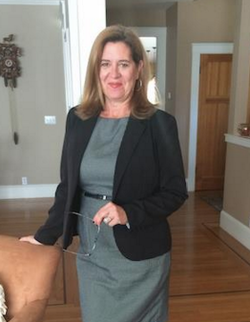|
In a world constantly re-defined by a blindingly fast global communication cycle it can be hard to stay abreast of the latest positive developments going on in business, film, media story-telling, animation and culture.
Our inaugural blog post shines a light on a new initiative coming out of a great organization, Women in Animation, http://www.womeninanimation.org/, based out of Los Angeles, California., US. 50/50 by 2025! Late last week I learned of a new initiative that WIA intends to launch, focusing on achieving 50% employee representation by women in the animation industry across executive, creative and technical roles. I had a long talk with WIA Chair, Jinko Gotoh, former colleague at Pixar Animation Studios, regarding this endeavor and hope to contribute my energy and experience to achieving this awesome goal. For more information, see below: http://variety.com/2015/film/festivals/annecy-women-animation-marge-dean-kristy-scanlan-1201522706/ Re-posted from VARIETY: ANNECY—According to a survey of several L.A.-based animation schools 60% of animation students are women. But only 20% of all animation creative’s are women. SEE MORE: Annecy Film Festival The telling data, from Women in Animation (WIA) board member surveys and statistics gathered in 2015 by the Animation Guild, formed some of the key talking points at a panel discussion entitled Women In Animation that took place Wednesday June 17 at Annecy’s MIFA market. In other data, in 2006, men made up 84% of the animation workforce, whereas roles filled by women totalled 16%. In 2015, men make up 80% and roles filled by women still only total 20%. Also according to the Animation Guild findings, 10% of all producers/directors are women. 17% of all writers are women, 21% of art/designers are women and 23% of animators are women. These are all average numbers, mainly focused on Los Angeles-based studios. According to WIA, the numbers are similar in Canada, with 16 -18% of the creative roles currently occupied by women. The survey revealed that in the last five years, only three animated features in the U.S. and two in France have had a woman director, and those were only as part of male/female directing teams. In the past 15 years, there have only been two solo woman directors of U.S. produced animated features – Jennifer Yuh Nelson for “Kung Fu Panda 2” (2011) and Jun Falkenstein for “The Tigger Movie” (2000). “The numbers are out of proportion because there has been very little work done to intentionally change the status quo. Most hiring in entertainment is risk averse where people hire who they know. It’s easier but what that leads to is the hiring of the same people and up until recently primarily men,” said Marge Dean , WIA co-president and production director at Mattel’s newly formed Playground Productions, told Variety. “Additionally, women have been trained to be artists in animation schools but not to be leaders. They need to be encouraged to be brave enough to step up to the plate,” she added. “As Lisa Henson said in her keynote address last night, ‘Women love to help make things happen and nurture projects … but my experience is that young women are not brave enough to say I want the film to be my film and I want to be the director.’” “So, our work is twofold: Get the industry to make the extra effort to find the new untapped talent available and then get the women to have the courage to see themselves as creative leads and pursue that goal,” Dean added. Panelists included WIA Advisory Board Members Bonnie Arnold, Margie Cohn, Lenora Hume and Adina Pitt as well as WIA Co-President Kristy Scanlan and WIA Chairpersons Jinko Gotoh and Tracy Campbell, Panel was moderated by Dean. WIA has chapters in Los Angeles, San Francisco, New York, Toronto, Dublin, Paris and New Delhi. New ones will soon be opened in Vancouver, Montreal, Seattle, London, Tokyo and Seoul. The animation lobby had 120 members in 2013, now 1,020. Some of its activities include educational programs, a shorts production program and measuring stats to check the progress of its mission. “Animation is a small niche in the greater world of entertainment and creating content. Therefore, it is a more manageable battlefield. When we are successful in having real impact in changing the animation industry, it will be a great example of what is possible on a larger scale,” Dean said. She added: “Further, because animation is primarily kid’s and family content, we will be able to show a different representation of female characters in both quantity and quality to a younger and more impressionable audience; leading to a very different view of women and their role in the world.” WIA’s aim is for 50/50 employment in 2025. John Hopewell contributed to this article Comments are closed.
|
Julie M McDonaldArchives
October 2022
Categories |

